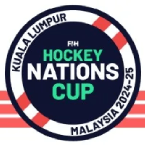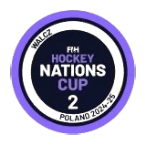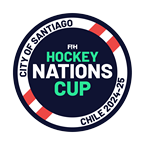
When Australia men and China women won the 2014 Youth Olympic Games in Nanjing, the Hockey5s finals were played out in an electric atmosphere in front of a capacity crowd in the Olympic Hockey Stadium.
The verdict was a sporting spectacle that was fast-paced, exciting, skilful and most importantly, engaging for sports fans - both devoted hockey enthusiasts and those new to the game.
Now the format is spreading across the globe, with the European Hockey Federation (EHF) Mediterranean Hockey 5s Cup in Malta the most recent event to raise the profile of 5-a-side hockey.
At that event, eight male and six female teams took part, with some nations, who will be new names to the hockey world, participating for the first time.
The U16 men’s competition included Croatia, Turkey, Slovenia and hosts Malta among its participants, while the U16 women’s competition included teams from Malta, Croatia, Italy and Turkey.
The tournament ended with Italy women and Turkey men winning the events. Besides playing for the accolade of being crowned Hockey5s champions, the teams participating in the Mediterranean Hockey5s Cup will have gained valuable experience and preparation for the EHF Hockey5s competitions in 2016/17 which are pathway events for the 2018 Youth Olympic Games in Argentina.
Such is the growing interest in Hockey5s that it was recently the subject of research testing at world-renowned sporting institute Loughborough University in England, an Innovation Partner of FIH.
FIH, in conjunction with the University, ran a testing programme based upon the existing rules of Hockey5s.
Several members of the England under-21 team, along with members of the University’s men’s and women’s teams, were involved in testing a number of derivatives to Hockey5s rules as well as different formats and equipment.
Speaking about Hockey5s, FIH CEO Kelly Fairweather said: "While 11-a-side hockey remains the pinnacle of our sport, we must continue to look at different ways to inspire the next generation. Smaller sided games and exciting urban events are two elements that can attract and engage new fans of all ages and backgrounds - particularly youths who are the future of our sport.”
Fairweather's words are backed up by Kwan Browne, Trinidad and Tobago's most capped player, and now part of the England Hockey coaching staff. He believes the shortened format will help teams succeed at the highest levels in the international game.
"From my experience of the shortened format, it improves understanding of the speed of the game, decision-making, playing low and making quick decisions under pressure – all good for the 11s format."
Former Netherlands star Sander van der Weide, added: “I like fives because you can score from everywhere, the ball doesn’t go out of the field so it stays in play nearly all of the time. There are a lot of goals so I think it is pretty attractive for spectators as well."
With an average of 10 goals per game during the Youth Olympic Games in Nanjing, the ability to play at smaller venues, with fewer rules and less stoppages, Hockey5s is undoubtedly a growing discipline across world hockey.
One of its greatest attractions is its ability to draw new nations onto the international hockey stage – Fiji men’s and women’s teams are a case in point.
Both teams, ranked 64th and 54th respectively – won gold at the Pacific Games in Port Moresby, Papua New Guinea; success on a world stage that they would be unlikely to achieve in the 11-a-side format of the game.
To get a better understanding of Hockey5s, visit the FIH Rules of Hockey page on FIH.ch by clicking here.
Read more about the Loughborough Testing that occurred earlier in September here.

























